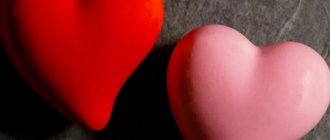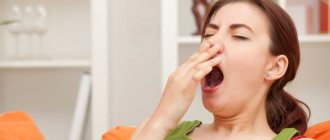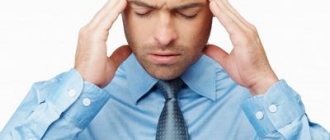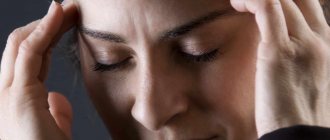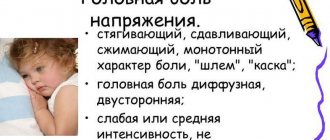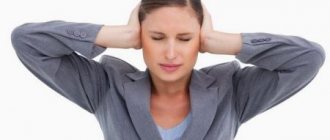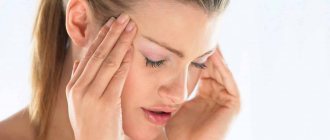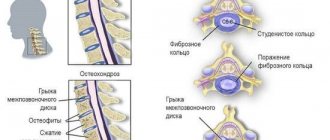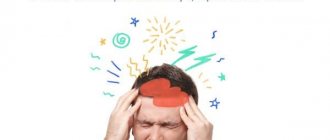Headache (cephalalgia) is a common phenomenon, 80-90% of people experience it 1-2 times a year. In 99% of cases, cephalgia is an independent symptom, in 1% it is a consequence of vascular, neurological or muscular diseases.
How many times a month do you have a headache?
> 1
Throbbing pain in the back of the head is noted by patients as acute and moderate, background or paroxysmal, limited or affecting other parts of the head. Occurs as a monosymptom or is accompanied by other disorders.
Impact of external factors
A person considers himself absolutely healthy, but at the end of the day he is tormented by throbbing headaches? This may indicate problems with blood vessels, muscle or emotional stress. It is external factors, as well as the patient’s lifestyle and work habits that provoke unpleasant sensations.
- Improperly organized sleep . Discomfort is caused not only by an unsuccessful sleeping position, but also by a lack of rest, late going to bed and waking up, a bad mattress, and a short bed. In the morning, a person goes to work without sleep, he feels exhausted, and in the evening - pain in the back of the head on the left, right, pulsation in the neck muscles.
- Nutritional Features . There are foods that can provoke vascular spasm, pulsating sensations, and pain in the back of the head. These are sharp cheeses, sweets with additives, and some types of chocolate. Separately, it is worth noting the coffee. Coffee lovers may complain of severe headaches that only go away after the next cup of coffee.
- Bad habits . Smoking provokes vasospasm, the development of atherosclerosis, which leads to the destruction of blood vessels and even stroke. Throbbing pain in the back of the head in a smoker may occur due to the fact that the person has decided to abruptly give up cigarettes. Painful sensations in the head are also noted in people who abuse alcohol.
- Hard work . In the evening, headaches plague not only office clerks who have been sitting at the computer all day. High-ranking bosses who are responsible for a large amount of work and milling operators who are forced to perform complex actions involving physical stress also complain about pulsation.
- Staying in an uncomfortable position all day . Constant tension in the muscles of the neck, shoulder girdle, and back leads to discomfort in the occipital region. If during the day at work a person has to exert not only physical, but also mental effort, being in an uncomfortable position, later he may experience throbbing pains that involve the neck and back of the head.
Even a nursing mother may notice that the back of her head on the right hurts if she fed her baby with her right breast “from under her arm” at night and fell asleep in this uncomfortable position.
Diseases accompanied by pain
Headache is a symptom indicating the development of a particular disease. You can accurately determine the cause of discomfort by paying attention to the accompanying signs. The most common diseases accompanied by throbbing pain in the back of the head:
Hypertension
With this disease, the head hurts due to stretching of the veins, a sharp narrowing of the capillaries. When the disease just begins to develop, patients complain of rare throbbing pains, a feeling of heaviness, and warming in the back of the head. If you do not undergo treatment, the unpleasant sensations become dull, aching, and constant. Possible complications of hypertension: stroke, retinal hemorrhage, heart attack.
Atherosclerosis
This disease also applies to vascular diseases. Large vessels, covered from the inside with cholesterol plaques, become deformed, and the vascular lumen narrows. As a result, blood circulation in the brain is impaired. This leads to vascular spasms and occipital vascular pain.
Neoplasms in the brain
A hematoma, benign or malignant tumor provokes regular morning throbbing headaches. The localization of discomfort depends on where the tumor is located. Associated symptoms: feeling tired, nausea, vomiting, drowsiness.
Cervical migraine
Spasm of the muscles of the shoulder girdle, irritation of the cervical nerve, narrowing of the lumen of the arteries can lead to disruption of blood flow to the brain and the occurrence of cervical migraine. How do patients describe the attack? They say: “shoots in the back of the head, burning, acute, unbearable pain appears in the neck, occipital region of the head.” Cervical migraine is accompanied by nausea, photophobia, and increased sensitivity of the skin under the hair and on the face. When turning or tilting the head, a burning sensation appears in the neck area, and itching appears in the back of the head.
Vegetative-vascular dystonia
Typically, a headache with this disease begins to haunt a person in the morning or afternoon. By evening, the intensity of pain does not change. The nature of the pain is aching, throbbing, pressing. Discomfort is accompanied by the following symptoms: nausea, weakness, feeling tired, tinnitus, dizziness. Patients complain of a feeling of depression, fainting, increased pulsation when moving or bending.
Increased intracranial pressure (poor circulation of cerebrospinal fluid)
Liqueur pain is accompanied by swelling of the face, blurred vision, general weakness, nausea, and sweating. Typically, as intracranial pressure increases, blood pressure decreases. In this case, the patient becomes irritable and quickly gets tired. Turning the head, sneezing, and coughing increase discomfort.
Depression, neurosis
Pain radiating in waves from the back of the head throughout the head, pulsating at one point, is a sign of nervous tension. Nervous vascular pain, a feeling of heaviness in the back of the head appear in a patient susceptible to depression and neurotics. Sometimes pain develops after a single stressful situation.
Neuralgia
If the occipital nerve becomes pinched by nearby tissue, the patient experiences throbbing, shooting pain at the back of the head. Typically neuralgia affects only one side of the head. Acute pain appears unexpectedly when bending or turning the head. In this case, the patient complains that the back of the head hurts on the left or right, the pain “shoots like a shooting” into the eye and ear. The pain intensifies if you touch the neck or back of the head.
Cervical osteochondrosis
When osteochondrosis affects the cervical spine, the patient literally immediately develops throbbing pain in the back of the head, which is not relieved by single-component painkillers. Unpleasant sensations increase when turning the head, and sudden movements cause dizziness. Another distinctive symptom is pain in the chest, similar to angina pectoris, only much longer, not fifteen minutes, but up to twenty-four hours. Painful sensations may be accompanied by numbness in the fingers.
Myogelosis
Hypothermia, drafts, and incorrect posture cause tightness in the neck muscles. In this case, the patient not only experiences throbbing occipital pain, but also experiences other symptoms: pain in the shoulders, dizziness, and stiffness of movement.
Spondylosis
With this disease, patients complain of constant pain, which is noted not only in the back of the head. Unpleasant sensations spread to the ears and eyes. Neck mobility is reduced not only because the patient tries to avoid pain. Stiffness in spondylosis is caused by bone growths on the cervical vertebrae.
Unpleasant sensations in the back of the head may appear due to an incorrectly formed bite. Sometimes pulsation in the head is a consequence of a traumatic brain injury or concussion.
Spondylosis of the neck
Spondylosis is a process of gradual aging of the spinal structures, accompanied by deformation or destruction of the vertebrae and the formation of bone growths (osteophytes) on them.
Description of the syndrome: shooting, sharp pain in the occipital region, usually occurring when turning the head and spreading to the eyes and ears.
Associated symptoms
- Partial loss of vision and hearing;
- numbness or tingling in the hands, less often - cramps in them;
- “crunching” when moving the head;
- sleep disorders.
Possible reasons
- Age-related changes after 50;
- hypothermia of the body;
- physical inactivity;
- professional sports;
- osteochondrosis;
- flat feet;
- endocrine diseases.
- heredity.
Treatment
A neurologist or orthopedist makes a diagnosis and prescribes treatment. Complex therapy includes:
- wearing corsets and collars to immobilize;
- bed rest;
- taking analgesics, anti-inflammatory non-steroids or muscle relaxants;
- exercise therapy;
- massage;
- physiotherapy: electrophoresis, balneo-, electro-, magnetic or hirudotherapy, vibration treatment, laser.
One of the consequences of the proliferation of osteophytes is complete immobility of the limbs. Therefore, pain syndrome requires treatment.
How to quickly eliminate discomfort?
When a pulsation begins in the back of the head, a person cannot concentrate on simple actions. I want to lie down and do nothing. The most cherished desire is to get rid of pain. But how?
- At home, throbbing pain in the neck and back of the head is relieved with a compress (warm or cold, the choice depends on what helps best).
- If the patient assumes that the discomfort is caused by muscle damage, it is necessary to tie a warm scarf, woolen scarf, or a hat around the neck.
- To relieve an attack of cervical migraine, the patient needs to lie down. It is better to leave the room in twilight, avoid loud sounds, and do not work at the computer.
- You can ventilate the room or go out into the fresh air and walk a little.
- A foot bath often helps. You need to immerse your feet in cool water and then rub them vigorously with a towel.
If the cause of the discomfort is stress, the patient can prepare a soothing herbal tea: with chamomile, lemon balm, peppermint, oregano.
Diagnostics
If you have pain in the back of your head, you need to see a therapist or neurologist. After conducting an initial examination of the patient and listening to complaints, the doctor will offer to undergo an in-depth examination:
- Take a general urine test.
- Take a general blood test, blood sugar, cholesterol.
- Complete daily blood pressure monitoring.
- Take an x-ray of the cervical spine.
- Check the vessels of the neck and brain using Doppler.
- Be examined using computed resonance tomography.
- Examine the brain using an MRI machine.
Important! You can take medications only after the doctor makes an accurate diagnosis. Do not self-medicate.
Main reasons
There are quite a few reasons that could cause such a problem, and it is quite difficult to determine exactly what exactly was the provoking factor. But the main factors can be considered:
- Osteochondrosis of the cervical spine.
- Spondylitis of the neck.
- Spondylosis in the cervical vertebrae.
- Myositis.
- Neuralgia of the occipital nerve.
- High blood pressure.
- Increased intracranial pressure.
- Spasm of cerebral vessels.
- Staying in an uncomfortable position for a long time.
- Muscle tension.
- Diseases of the temporomandibular joints.
- Stress.
Each of these pathologies requires a special approach and careful diagnosis, as well as treatment, which must be carried out by an experienced specialist.
Treatment
What does the treatment prescribed by the doctor depend on? From the results of the examination, the general condition of the patient and even his age. At the same time, the specialist also takes into account the information received from the patient and examination data. Only after accurately establishing the cause of the discomfort does the doctor prescribe treatment.
You can eliminate headaches with the help of non-steroidal anti-inflammatory drugs: Ibufen, Diclofenac. These medications can be taken orally in the form of tablets, syrups, or a special gel applied to the neck. Painful sensations of low intensity are relieved with analgesics. For migraines, you can take special drugs of the triptan group, ergotamines.
If a patient is bothered by pain in the back of the head on the right or left, and the doctor assumes that the patient is developing a cervical migraine or has damage to the cervical muscles, taking painkillers alone is not enough. As with vascular pain, medications that improve cerebral circulation are first prescribed: nootropics, vasotropics, herbal medicines (Ginkgo biloba).
Hypertensive patients are prescribed drugs that normalize blood pressure and improve cardiac function. If the patient has throbbing and pain in the back of the head due to osteochondrosis of the cervical spine, myogelosis, the doctor may recommend undergoing a course of massage or manual therapy.
To consolidate the positive effect of treatment, patients need to constantly perform physical therapy exercises, swim, rest well and get enough sleep, and avoid stressful situations.
Attention! Even if you have been diagnosed with a malignant brain tumor, there is no reason to panic. In the early stages, cancer is treatable. Therefore, it is so important to consult a doctor at the first unpleasant symptoms.
Neck myogelosis
Myogelosis is a thickening of muscle tissue.
Description of the syndrome: persistent headache in the occipital part, radiating to different parts of the body. This is the main symptom of the disease, accompanied by dizziness and tinnitus. On palpation, nodular neoplasms of varying sizes can be felt in the neck. When pressing on them, the pain intensifies.
Possible reasons
- Stress, psychotrauma;
- physical inactivity;
- professional sports;
- diseases of the musculoskeletal system or cardiovascular system;
- muscle injuries;
- hypothermia of the body.
Treatment
Treatment is complex. As a rule, they are prescribed:
- medications: NSAIDs, painkillers and anticonvulsants, muscle relaxants, vitamins B, E, A, D;
- physiotherapeutic procedures: electrophoresis, shock wave, laser, magnetic and electrotherapy, mud therapy;
- manual therapy;
- Exercise therapy.
In the absence of timely or correct treatment, myofibrosis may develop. These are irreversible changes in muscle tissue that limit mobility forever.
Don't delay seeing your doctor if...
- Pain in the back of the head of varying intensity torments a person constantly.
- A sharp burning pain appeared, the vision darkened, and the person lost consciousness.
- The patient experiences regular morning pain, accompanied by nausea.
- As the load increases, the pain increases.
- Taking painkillers does not bring relief.
If a person has a pulsation in the back of his head or a headache, this does not always indicate the development of a serious illness. After a thorough examination, the doctor did not reveal any pathologies and recommends lifestyle changes? Perhaps you should listen to his advice, put things aside, take a week off from work and relax.
